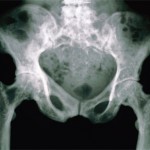To determine the best route to the Minster from our hotel, I looked at a guide map that showed the twisted, maze-like paths of city that reprised hundreds of years of history. Near the junction of Lord Mayor’s Walk and Morkgate, I was surprised to see the location of an NHS clinic. How nice, I thought, to know where to go if I happened to flop on the rain-slicked steps of the old wall or suffer from the rages of gout after overindulging at a pub called The Three-Legged Mare.
As I walked through York’s crowded streets, I studied people for any sign of the NHS on their physiognomy. Certainly, some young people had hair that was colored outrageously—green, violet, or pink—but I did not think that such coloration reflected an untreated malady unless, of course, exhibitionism counts.
York has Viking roots and, at the recommendation of my friend, we went to the Jorvik Viking Centre which, at the site of an archeological dig, chronicles the lives of Vikings who arrived in the area in 866 AD. York sits on the layered ruins of past civilizations—Roman, Anglo-Saxon, Viking, and Norman—with the Jorvik excavation an especially rich find. As it happens, the place is a gold mine for a rheumatologist.
Rheumatologic Treasure of the Vikings
One of the bonanzas of the Jorvik excavation was a series of well-preserved skeletons which showed clearly that, among the afflictions of the Vikings, musculoskeletal disease was high on the list. These skeletons had the telltale signs of degenerative disease, Schmorl’s nodes, Pott’s disease of the spine, and the most rip-roaring case of diffuse idiopathic skeletal hyperostosis (DISH) you have ever seen. As the exhibit sign explained, evidence for DISH goes back more than 70,000 years, with Neanderthals suffering from this condition. With a neck encased in bone, no wonder these prehistoric men always look dour.
One of the skeletons on display showed degenerative joint disease of the hips, with the acetabulum pock-mocked as if blasted with buckshot. Next to the skeleton in the exhibit case, the museum placed a shiny metal hip prosthesis to show what modern medicine would do for that poor old Viking. While pleased by the homage to modern medicine, I was struck by the sign that said that the prosthesis was “on loan” from the Pinderfields General Hospital in Wakefield. Why not a “gift,” I wondered. I know that the NHS has its fiscal woes, but I worried that, in a pinch, an orthopedist would sneak in at night to snatch the prosthesis, give it a little dusting and cleaning, and insert it into the leg of a grateful patient, diminishing the queue by one.

